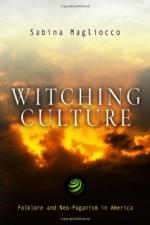|
This section contains 3,520 words (approx. 12 pages at 300 words per page) |

|
NEOPAGANISM. The term Neopagan covers a wide variety of traditions that include re-creations of ancient Celtic Druidism (a British organization of sun worshippers who gathered in sacred groves), Wicca or Witchcraft, ceremonial magic, and neoshamanism (revivals of ecstatic journeys into the spirit world in indigenous and pre-Christian cultures). Neopaganism's historical origins lie in nineteenth-century religious movements such as Theosophy, folk practices such as tarot and astrology, studies in folklore and anthropology, the theatrical rituals of an Edwardian occult group called the Order of the Golden Dawn, and the countercultural milieu of North America in the 1960s. Neopagans' images of god and goddess emerged from nineteenth-century British folklore and literature and were influenced by the armchair anthropology of scholars like Sir James Frazer (1854–1941), author of the sweeping Golden Bough (1890), and the mythology of Robert Graves (1895–1985), author of The White Goddess (1948). In Europe, contemporary pagan organizations usually claim a lineage...
|
This section contains 3,520 words (approx. 12 pages at 300 words per page) |

|


